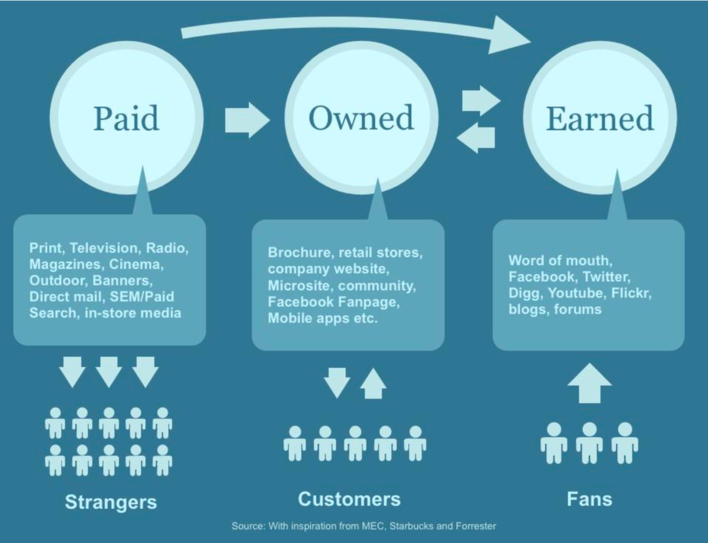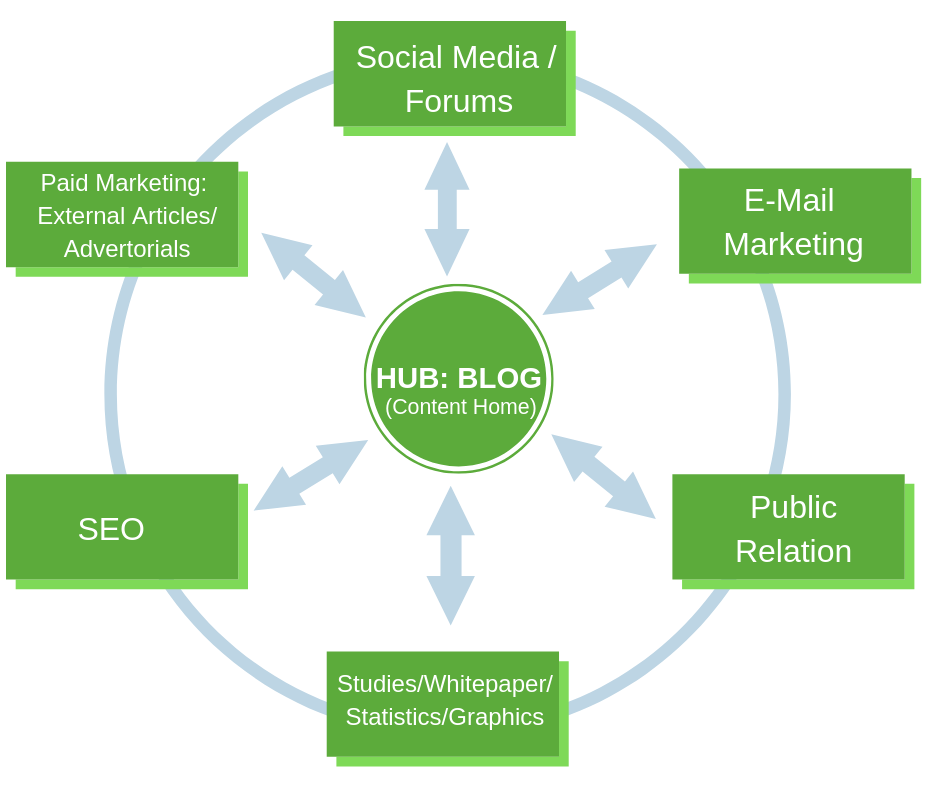Phil Reif blogs about a seminar he attended as part of the CAS in Digital Finance delivered by Christian König.
This fascinating seminar took place one very warm Saturday. The first thing Christian recommended us to do was to fire our existing advertising agencies.
By the end of the day, we understood the basics of digital communication and specifically the subject of content management using the HUB principle better than many ad agencies!
Christian used current and specific examples to demonstrate how digital content influences us nowadays, for example, he discussed the use case of booking a hotel room or flight. In these cases, customer ratings and comparison portals play a more important role than paid advertising on digital channels.
These examples beautifully illustrate how the current trend has moved away from paid media towards earned media and their relevance in terms of online relevance and longevity.

Paid advertising on online channels is usually expensive and is generally only rewarded with a 0.1% click-through rate (for banners).
It is also unclear whether the click has been actually carried out by a person who is interested in the advertisement. In addition, paid advertising – which hardly ever renders well on mobile devices – can only be viewed temporarily.
Owned media has now increased in importance. It is effectively any online content which is used to promote a company, e.g. blogs, research activities and press articles.
Earned media is in fact the most valuable step in the advertising process. It involves a third-party writing or speaking about your company in a positive way or linking his articles to your content. The most recognisable example of this is the content produced by online influencers or YouTube vloggers who use these methods to very good effect.
It has already become very clear that quality content triumphs over paid media. Content is much easier for search engines such as Google to find as it remains online for longer periods.
Search engines rate content higher that have been accessed via third-party links than content that has not been accessed in this way. The more individualised the content, the higher the chance it has of being noticed and cited by other media professionals. It can be the case that complete posts are copied and republished in other regions or countries.
The growing level of digitalisation in our society has strongly influenced this development. The percentage of ROPO customers in Germany has risen from 45% in 2013 to 61% in 2017. Online sales of bank products have grown from 18% to 30% in the same period. A field report compiled by Christian from Ho Chi Minh City (Vietnam) demonstrates that this trend is even more evident in Asia. (Download study here)
Recommendations or reports about products or services are valued more highly than their advertisements in these countries. We will obtain information about banking and insurance products in this way in the future in the same way that we now obtain information about hotels.
A current example is the 3a product that has been launched by the start-up VIAC. The company has been able to win around tousands of new customers through word-of-mouth recommendations and influencers with (nearly) no advertising.
The HUB Principle with Content at the Core
The HUB principle lies at the forefront of digital communication. It involves setting up a digital control centre which has various communication satellites docked onto it.

Many companies start with a social media channel as their online presence, however, they fail to combine this with their core/HUB. Content is placed in the core which the company intends to report on in the form of a blog which highlights essential features of a communication.
Satellites are then docked onto this hub, e.g. an infographic, which presents specific pieces of content in a clear and concise way.
This image then enables the satellites to be used and thus pointed to the hub (it is important to note that if the image is named ‘infographic.jpg’, Google will never find it). It is extremely important to ensure that blog articles have their own landing pages to ensure they are easy to find and are permanent.
A very good example of the HUB principle is an independent asset manager from Winterthur which has been providing information on retirement planning for a number of years.
Despite having a very simple website, it has managed to rank third place on a Google search using the keyword “retirement (Pensonierung)” for the past 10 years without actually having to pay for it!
One important element of successful digital communication is the ability to measure and monitor the channels. It is only possible to identify new customer requirements, to deal with complaints in a timely fashion and to avoid problems escalating if proper monitoring is carried out.
User comments can be an especially good source for new content or a stimulus for self-reflection. It is also useful here to focus on the “closed user group principle”, e.g. a Facebook group of fintech specialists. It is necessary to have a separate process for this as the usual monitoring tools are not applicable here.
The Basics of Digital Communication
Christian draws our attention to three fundamental points that help to improve the process of sending emails:
- The title of the email should capture the reader’s attention right from the start. The title “Newsletter No. 3” does not pack any punch and should be replaced with specific content.
- Many people first see an email on their mobile phones. If they receive a message that starts, “If you cannot see this content …” it is highly likely that this email will be deleted without being read.
- It is also not a good idea to use a sender address such as “Noreply@XYZ.” This sender address clearly sends the message that recipient feedback is not welcome.
It is important to observe a few very important points when considering your online presence:
- The title, the URL and the meta description of a website must include all the relevant information and must align with each other. This is the only way to ensure that the site can be found easily and ranked highly on search engines.
- Page loading speed. Google has now started showing this by using a lightning bolt symbol before the URL on mobile devices. This feature now also enables the user to decide whether he would like to click on a link to a slow or a fast page after he has entered his search.
- The pages must be fully optimised to be responsive on mobile and tablet on different screen formats.
- Keyword density is relevant for each type of content and is also rated by search engines.
- How many links are shown on this page.
Christian particularly recommends that the following points should be observed when posting on social media:
- Always include an image with your post as it attracts much more attention than just text.
- Always include a link that includes a specific subject area using a hashtag.
- Always credit other content providers by mentioning them personally or thanking them. This shows respect and usually results in your article being shared again. It is possible to tag people directly in an image.
Featured image credit: pixabay.com



Schreibe einen Kommentar